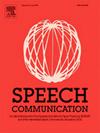An overview of high-resource automatic speech recognition methods and their empirical evaluation in low-resource environments
IF 2.4
3区 计算机科学
Q2 ACOUSTICS
引用次数: 0
Abstract
Deep learning methods for Automatic Speech Recognition (ASR) often rely on large-scale training datasets, which are typically unavailable in low-resource environments (LREs). This lack of sufficient and representative training data poses a significant challenge for applying ASR systems in specific domains categorized as LREs. In this paper, we provide a comprehensive overview and empirical analysis of state-of-the-art deep learning techniques for ASR, which are primarily designed for high-resource environments (HREs). Our aim is to explore their potential effectiveness in LRE settings. We focus on identifying key factors that influence the adaptation of HRE models to LRE tasks. To this end, we survey advanced deep learning models and conduct a comparative evaluation of their performance in LRE contexts. Additionally, we propose that pre-training ASR models on HRE datasets, followed by domain-specific fine-tuning on LRE data, can significantly enhance performance in data-scarce settings. Using LibriSpeech and WSJ as our HRE datasets, we evaluate these models on two LRE datasets: UASpeech for dysarthria speech and iCUBE, our novel human–robot interaction dataset. Our systematic experiments, involving varying dataset sizes for pre-training, demonstrate the efficacy of combining pre-training and fine-tuning strategies to improve recognition accuracy in LREs.
求助全文
约1分钟内获得全文
求助全文
来源期刊

Speech Communication
工程技术-计算机:跨学科应用
CiteScore
6.80
自引率
6.20%
发文量
94
审稿时长
19.2 weeks
期刊介绍:
Speech Communication is an interdisciplinary journal whose primary objective is to fulfil the need for the rapid dissemination and thorough discussion of basic and applied research results.
The journal''s primary objectives are:
• to present a forum for the advancement of human and human-machine speech communication science;
• to stimulate cross-fertilization between different fields of this domain;
• to contribute towards the rapid and wide diffusion of scientifically sound contributions in this domain.
 求助内容:
求助内容: 应助结果提醒方式:
应助结果提醒方式:


